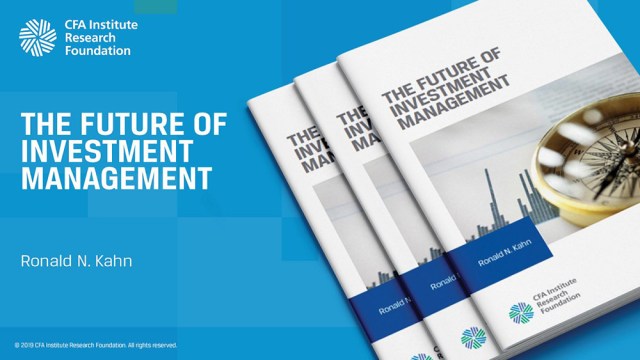[ad_1]
What will investment firms need to thrive, probably even survive, in the years ahead?
Creativity — both possessing it and harnessing it — will be essential.
How do we know? Because we asked, and at the recent Focus Consulting Group (FCG) Leadership Forum on Creativity, investment leaders gave us an unequivocal answer.
In order to survive and thrive, will you need to get more creative?
| Yes | Neutral | No |
| 85% | 5% | 10% |
As if those numbers weren’t evidence enough, we queried staff from over 100 firms about whether creativity and innovation were either present or desired values within their firms. Their responses lent further weight to our thesis:
| Value | Existing | Aspirational | Gap |
| Creativity and Innovation | 7% | 25% | 18% |
Currently, about 7% of staff members believe their firms have a culture of creativity. When asked what values are essential to success, one in four identify creativity. The gap between what these professionals have and what they want is a statistically significant 18%.
The results are clear: Investment leaders recognize the need for creativity, and staff members affirm its value.
So what is creativity and how can we cultivate it? For our purposes, we define creativity as
“The ability to produce work that is novel (that is, original, unexpected), high in quality, and appropriate (that is, useful, meets task constraints).”
Nature or Nurture?
One compelling data point from our forum: Many of the leaders believe creativity is a talent that not everyone possesses. You either have it or you don’t. Some 60% of respondents felt that way.
| Only Some Have Creative Talent | Undecided | Everyone Has Creative Talent |
| 60% | 10% | 30% |
We don’t buy it. We believe everyone can be creative.
Yet the majority was right in a certain sense. For many of us, maybe even most of us, our creativity decreases over time. Various influences — school, work, family experiences, and society at large — can stifle or otherwise curtail our creative instincts. Studies bear this observation out:
| Five-Year-Olds | Eight-Year-Olds | 44-Year-Olds | |
| Laughs per Day | 113 | 93 | 11 |
| Questions Asked per Day | 65 | 41 | 6 |
| Percentage with Creative Potential | 98% | 32% | 2% |
Source: Chic Thompson, What a Great Idea!
So the leaders weren’t wrong: Nearly all of us do have creative ability. But by the time we embark on our professional careers, nearly all of us have lost it!
The good news is creativity can be restored. Life and circumstances may tamp it down and rein it in, but with the right conditions, it can be revived.
But that takes leadership: Leaders must create cultures that support creativity.
Cultures of Creativity: The IDEAS Framework
So how can we build those cultures? What are the necessary contributing factors? We’ve identified five conditions that support creativity: These are captured in the IDEAS framework.
- IQ/Expertise
- Discovery/Curiosity/Mental Flexibility
- Emotional Intelligence (EQ)/Psychological Safety
- Attention
- Support
1. IQ/Expertise
We enhance creativity by integrating existing bits of knowledge into new ideas, techniques, tools, and so forth. So the more knowledge and expertise at our disposal, the greater the likelihood we will generate new ideas.
Consider, for example, the price-to-earnings (P/E) ratio in stock investing. Why not apply the concept in other domains? In real estate investing, for example, price-to-funds-from-operations (P/FFO) is a standard measure.
IQ and expertise also help us judge the appropriateness and novelty of a new idea. When casting about for new investment theses, experts can quickly evaluate whether an idea is truly unique and meets task constraints.
That said, when applied unconsciously, IQ and expertise can also contribute to our undoing. How? All of that “know-how” and the methods and models we use to deploy it can be the source of behavioral bias and otherwise put us on autopilot.
But just how well are investment firms fostering these values? In our survey, 60% of investment executives agree that their firm’s culture supports IQ/Expertise. But a full 30% express only partial conviction. Just one in 20 disagree and believe their firm does not value these qualities.
2. Discovery/Curiosity/Cognitive Flexibility
Everyone wants to be right and look good at all times. These traits are major deterrents to creativity.
A genuine openness to discovery and curiosity requires that we shrink our egos so that, like the five-year-olds in the chart above, we ask questions and wonder openly about how things work. Cultivating that spirit means constantly pushing out our knowledge boundaries. We have to avoid settling on a narrow way of doing things.
When cognitive flexibility is coupled with expertise, we can not only leverage our existing knowledge to confront new-to-us problems but also switch into explorer mode and expand our capabilities.
In our survey of industry executives, however, nearly half said that their culture did not strongly support discovery and curiosity.
3. EQ/Emotional Safety
Research demonstrates people with high EQs, or self- and other-awareness, tend to be more creative, too.
So how can we develop and sharpen these qualities? Meditation can help. Studies show that meditation increases self- and other-awareness as well as creativity. Because good EQ is about both accepting ourselves and others and regulating our mental processes and emotional responses, a meditation practice can direct our mind toward creative outcomes.
But emotional safety is essential. To be creative, we need to feel secure and unthreatened. If our environment is a fearful one where mistakes are punished, new ideas can generate eye-rolls or worse. If the only way to achieve safety is to color within the lines, there is no incentive for us to be vulnerable and explore new possibilities.
So high levels of EQ are essential to developing a safe culture for creativity. Leaders who intimidate or blame will create fear. Everyone must be willing to look at their behavior and modify it when needed. They must also work to read and understand their colleagues from a place of empathy. Some of us have thicker skins than others. More sensitive people may be brimming with creativity but be afraid to unleash it.
Good leadership fosters high EQ and creates a safe environment where team members can question, explore, push back, challenge the status quo, and have open debate.
In our survey, nearly all the leaders believe their cultures support EQ and emotional safety. These self assessments strike us as a bit optimistic, particularly since they run counter to what we hear from staff members.
Of course, it is something of a truism that if you don’t have high EQ, you won’t know you don’t have high EQ!
4. Attention
How many interruptions have you had while reading this article? How many times have you checked your phone? By attention, we mean sustained attention.
In our recent work with industry leaders, only 5.3% say their culture strongly supports attention. In fact, 49.7% rate their support of attention as below neutral.
And that’s a problem. Neuroscientists have found that our working memory is one of the linchpins of creative discovery. When it is overtaxed, our ideas will rarely stray far from the conventional.
Holding multiple ideas in our working memory is how we develop new combinations of existing knowledge and judge their uniqueness. So if we want to increase our creativity, we need uninterrupted time to take deep dives into the problems we are trying to solve.
So close your desktop email program, set your mobile device to “Do Not Disturb,” and hang a “Gone Fishin’” sign on your office door. The attention deficit is clearly one of the big problems in our industry. But it is also one of the most easily addressed. And as our examples show, the solutions to it don’t require much in the way of creativity.
5. Support
Creativity requires us to deepen and broaden our knowledge, stay curious and open, increase our emotional intelligence, and give ourselves the time and space for sustained attention.
But investment organizations have a role to play supporting their staffs in each of these endeavors as well.
For example, why not give our teams four to eight hours each week of uninterrupted time to focus on deep, creative work? Or encourage them to respond to emails only during appointed times — say, from 8 am to 10 am or 3 pm to 5 pm? Or how about ensuring that their continuing professional development activities broaden their knowledge rather than just increase its depth?
Here’s a novel idea: Why not teach our staffs some creativity skills? After all, expecting our teams to become more creative without learning how is a bit like handing a set of golf clubs to a novice and saying, “Okay, go play golf.” So lessons may help.
The final question we asked executives is, Which of the Big Five components of the IDEAS framework have you successfully implemented within your organizations?
They believe they have best supported IQ and EQ and least supported Discovery/Curiosity (16.4%) and Sustained Attention (12.7%). The gap between what they have and what they need in these areas is enormous. And the IDEAS framework can help.
Implementing these strategies can unchain your creativity and increase your competitiveness and that of your firm. And that can help ensure you survive and thrive in the investment industry of the future.
Now turn your attention to something creative!
If you liked this post, don’t forget to subscribe to the Enterprising Investor.
All posts are the opinion of the author. As such, they should not be construed as investment advice, nor do the opinions expressed necessarily reflect the views of CFA Institute or the author’s employer.
Image credit: ©Getty Images/Hero Images
Professional Learning for CFA Institute Members
CFA Institute members are empowered to self-determine and self-report professional learning (PL) credits earned, including content on Enterprising Investor. Members can record credits easily using their online PL tracker.
[ad_2]
Image and article originally from blogs.cfainstitute.org. Read the original article here.



